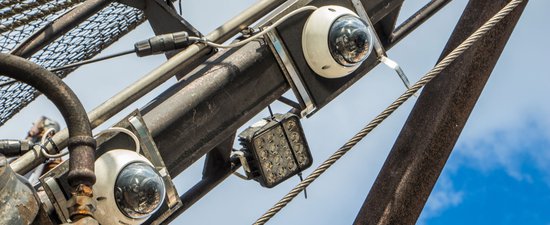Economic Analysis of Max Retention Electronic Monitoring
Evaluating costs and benefits.
In August 2018, the Gulf of Maine Research Institute (GMRI), with its partners, launched a Maximized Retention Electronic Monitoring (MREM) program to support a complete monitoring program of kept and discarded fish on vessels operating in the Northeast Multispecies Fishery. The purpose of the program is to improve fleets' economic performance while also improving management capabilities by aligning incentives with management goals. A thorough evaluation of the current and future cost of the MREM program to industry and management stakeholders is crucial to inform decision-making.
Report goals:
- Accurately estimate the costs of operating under the MREM system.
- Identify opportunities and barriers to selling and marketing sub-legal sized fish harvested under MREM.
- Examine possible changes in costs and benefits when more vessels operate under MREM

Economic Report: Maximized Retention Electronic Monitoring in the Northeast Multispecies Groundfish Fishery
Our report focuses on the successes, failures, and key hurdles of the proposed program and detail the ability of the MREM program to meet proposed data collection and accountability objectives. The economic report estimates the cost and benefit of expanding the scope of the MREM program, using a comprehensive data set from the first three years of the MREM program.


To evaluate program costs in the current implementation of the MREM program, we will assemble information regarding the investment, operational, and maintenance costs of the EM systems born by each vessel and calculate the cost per vessel from this information. Fixed cost elements that are shared by all the vessels will be cross-checked against each other as well as against cost information retained by the program’s administrator, GMRI.
Program administration costs, as well as video review costs will also be included in the analysis. Additionally, we will collect sales and landings information from all MREM vessels throughout the course of their participation in the program. Because the MREM program requires vessels to land sub-legal sized groundfish, there is a potential to earn additional income from those catches, if they can be successfully sold. Based on the landings and sales information, we will estimate additional income gains from the sales of sub-legal landings to examine the potential economic benefits of the Maximized Retention protocol over other EM programs.
Project Team
-
![]()
-
![]()
Heather Cronin
Fisheries Technical Assistance Program Manager
-
![The staff photo for Elizabeth Moore]()
Elizabeth Moore
MREP Program Manager, Greater Atlantic and West Coast Regions
Project Sponsor
This project is generously supported with funding from the National Fish and Wildlife Foundation.
Read More
-
![Gulf of Maine, Explained: Electronic Monitoring]()
Gulf of Maine, Explained: Electronic Monitoring
In this video, Technical Programs Manager Mark Hager introduces and explains electronic monitoring — a system of cameras and computers mounted onboard fishing vessels. This …
Gulf of Maine, Explained
-
![Electronic Monitoring Expansion]()
Electronic Monitoring Expansion
To comply with federal regulations, fishermen in the Gulf of Maine are monitored by fisheries observers — people who ride along with fishermen to collect …
Perspectives
-
![Supporting Regional Fisheries]()
Supporting Regional Fisheries
Our Fisheries Technical Assistance Program (FTAP) provides a range of technical, convening and innovation services to New England’s commercial fishing industry to promote the long-term …
Perspectives
-
![Electronic Monitoring Shows Promise]()
Electronic Monitoring Shows Promise
It’s easy to imagine fishing as a Wild West landscape, with fishermen heading out to sea, catching as many fish as they can, and selling …
None




